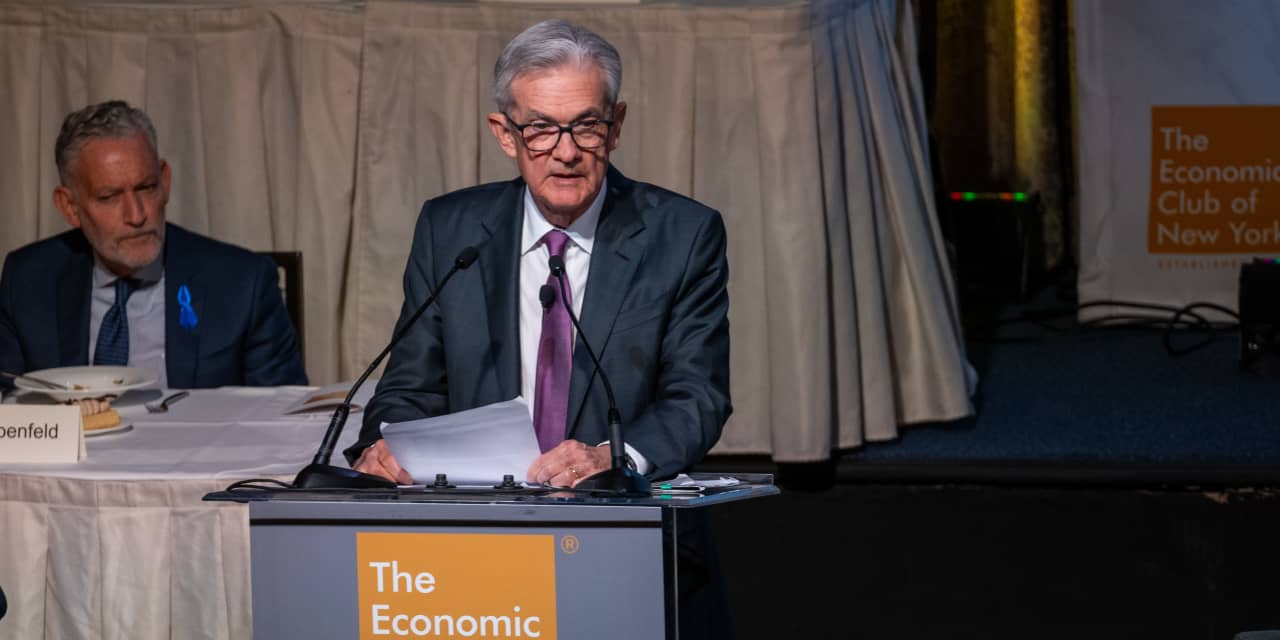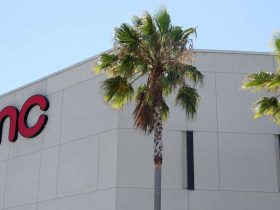Another interest-rate hike looks to be off the table at the Federal Reserve’s November policy meeting—and maybe at the December meeting, too. A leading reason: sharply higher bond yields.
Fed Chairman Jerome Powell laid the groundwork Thursday, in a speech to the Economic Club of New York, for the central bank to hold interest rates steady at its Oct. 31-Nov. 1 meeting. In prepared remarks, Powell highlighted that the economy is already moving toward price stability, and that lags in monetary policy and rising geopolitical uncertainty are forcing the Fed to “proceed carefully.”
“The Fed is in no hurry to tighten monetary policy further. A November rate hike can safely be priced out,” writes EY Chief Economist Gregory Daco.
The markets agree: The odds that the Fed will keep the target rate at 5.25%—5.5% were 99% following Powell’s remarks, according to the CME FedWatch Tool.
During a follow-up question-and-answer session moderated by David Westin, anchor of Bloomberg Wall Street Week, Powell acknowledged the role that rising bond yields are having in tightening financial conditions. The
10-Year Treasury yield
rose to 4.995% on Thursday evening, the highest level since July 2007, following Powell’s remarks.
Yields across the Treasury curve have been on the rise this week. Higher yields lift interest rates on loans, and affect a range of investments, including corporate bonds and mortgage-backed securities.
In response to Westin’s questions, Powell highlighted various reasons why bond yields could be rising. If yields are climbing due to “endogenous” factors, or because investors expect the Fed to raise rates further, he said, then financial conditions would loosen if the Fed didn’t follow through.
But other factors could be at play instead, Powell said, citing concerns about fiscal deficits or what he called a “change in correlation between stocks and bonds.” He suggested those other factors are playing a larger role in pushing up yields, saying the rise “doesn’t seem to be principally about expectations of us doing more.”
That suggests the recent tightening could last.
“I think we have to let this play out a bit and watch it,” Powell said. “For now, it’s clearly a tightening in financial conditions.”
Westin asked Powell if he agrees with some of his Fed colleagues, who have suggested the bond market is doing the job of tightening financial conditions for the central bank. San Francisco Fed President Mary Daly said in early October that bond-market tightening so far was already equivalent to “about a rate hike.” Yields have risen further since her speech.
Powell responded by noting that “the whole idea of tightening policy is to affect financial conditions.” Higher bond rates are producing tighter financial conditions right now, he said, adding, “that’s how monetary policy works.”
Westin then asked whether the “arithmetic” around rising bond yields reduced the Fed’s impetus to continue raising rates. “At the margin, it could,” Powell said. “I think that remains to be seen.”
Powell added that he isn’t “blessing any particular level of longer term rates,” suggesting they will be determined more by investors.
Although the Fed chairman didn’t lay out specifically where monetary policy is headed, his remarks made clear that the default policy action remains additional firming of monetary policy, rather than loosening, noted Peter Williams, global macro strategist and economist at 22V Research.
Williams pointed to Powell’s comment that monetary policy isn’t too tight right now as potential evidence that bank policy will skew to the hawkish side in the medium-term. “There is little sign or desire that the Fed wants to start discussing [rate] cuts in the slightest,” Williams wrote.
Write to Megan Cassella at [email protected] and Megan Leonhardt at [email protected]
Read the full article here











Leave a Reply